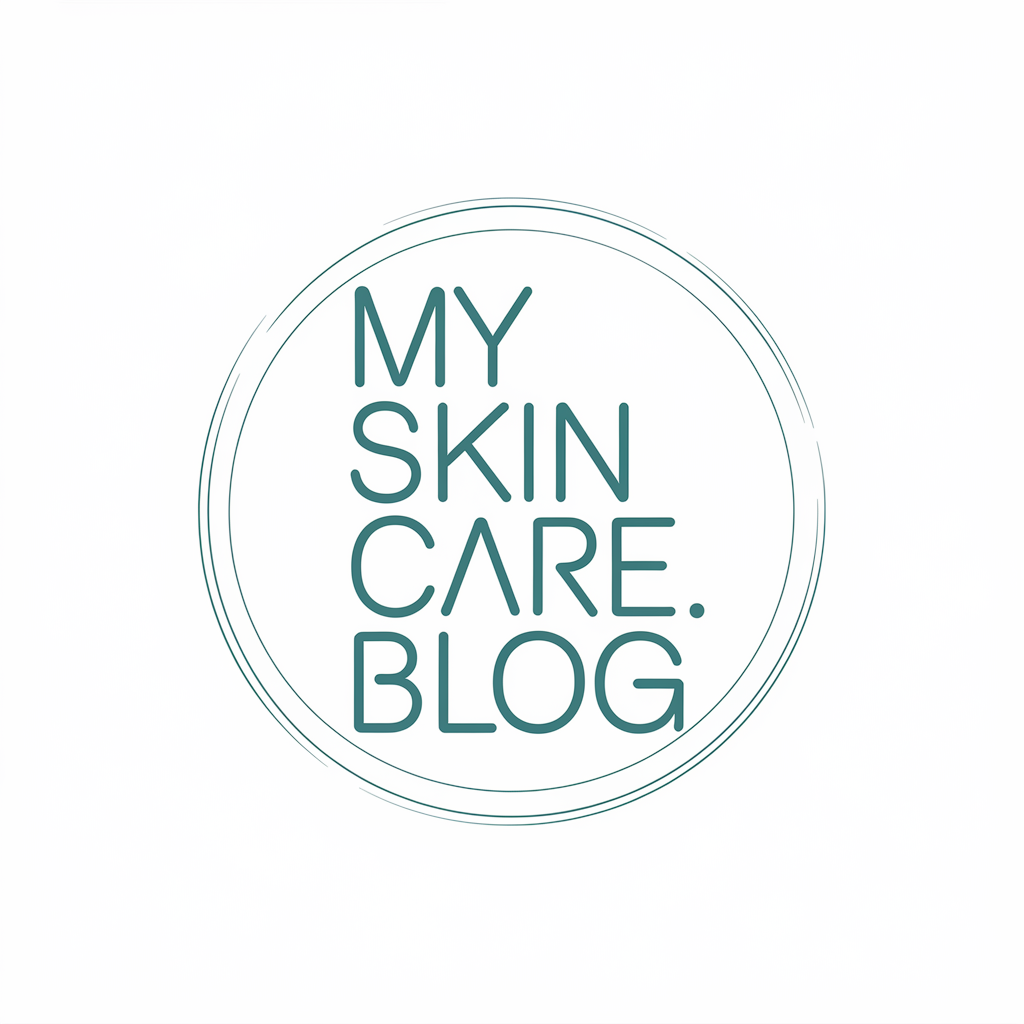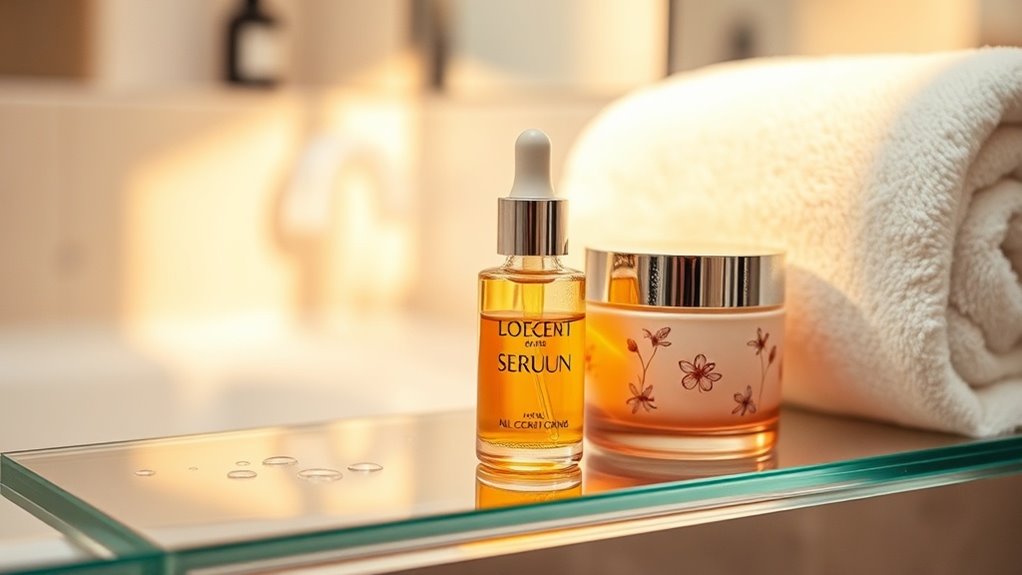How to Choose Skincare That Actually Works for YOUR Skin
To choose skincare that actually works for your skin, start by identifying your skin type—oily, dry, or combination—and pinpoint concerns like acne or aging through simple daily observations. Evaluate ingredients for evidence-based actives, such as retinoids, while avoiding irritants like sulfates. Select products that match your needs and budget for real value, then build a tailored routine with logical layering. Following these steps ensures noticeable results, and you’ll discover even more strategies to refine your approach.
Key Takeaways
- Identify your skin type and concerns by observing daily signs and tracking triggers for personalized product selection.
- Scrutinize product ingredients, prioritizing clinically proven actives and avoiding irritants like sulfates or parabens.
- Choose products that align with your specific needs, such as acne or aging, while considering value and budget.
- Build a customized routine by layering products logically, like cleanser then moisturizer, based on your skin’s response.
- Research ingredients for efficacy and evaluate product performance through reviews and personal testing to ensure compatibility.
Understand Your Skin Type
How do you identify your skin type? Start by observing your skin’s daily behavior: if it feels oily in the T-zone, you likely have combination skin; dry, tight patches suggest dry skin; and shine across your face points to oily.
Use a simple test—cleanse your face, wait an hour, then check for oil with a tissue. This evidence-based approach ensures accurate skincare selection, as choosing products matched to your type—oily, dry, normal, or combination—prevents irritation and enhances results. For optimal results, consider incorporating essential ingredients tailored to your skin type for enhanced benefits.
You’re empowering yourself with practical knowledge for effective routines. Additionally, learning about little-known testing methods can provide more precise ways to confirm your skin type at home.
Identify Your Skin Concerns
Once you’ve nailed down your skin type, it’s time to pinpoint your specific concerns, such as acne, aging, or sensitivity.
Start by closely observing your skin: for acne, note frequent breakouts, blackheads, or inflammation, often linked to hormones or bacteria. Additionally, dietary factors like food triggers can contribute to acne flare-ups, making it essential to monitor your diet.
Aging signs include fine lines, wrinkles, or loss of firmness, influenced by sun exposure and genetics.
Sensitivity appears as redness, itching, or rashes, possibly from allergens.
Track these in a daily journal to identify patterns and triggers, empowering evidence-based decisions for targeted care.
For acne in particular, recognizing everyday habits that contribute to breakouts can help in developing effective prevention strategies.
Consult a dermatologist if concerns persist for accurate diagnosis.
Evaluate Product Ingredients
With your skin concerns identified, you’ll want to scrutinize product ingredients for safety and efficacy.
Start by checking for clinically proven actives like retinoids for anti-aging or ceramides for barrier repair, backed by studies in dermatology journals. Avoid common irritants such as sulfates, artificial fragrances, and parabens, which can disrupt skin balance.
Look for third-party certifications like EWG Verified to confirm purity. Always read the ingredient list in order; the first few components dominate the formula. Additionally, pay attention to concentration percentages to ensure that active ingredients are present in effective amounts for better results.
Prioritize products with transparent labeling and minimal fillers for maximum results. Stay informed via reliable sources like the FDA.
To further protect your skin, consider auditing your current harmful ingredients for potential damage to skin health and exploring safer alternatives.
Select Based on Your Needs
You assess your skin type first to match products with your unique needs, whether it’s oily, dry, or combination.
Then, you target key concerns like acne or aging by selecting ingredients backed by research for those issues.
This practical strategy ensures your skincare choices deliver real, noticeable results.
Additionally, prioritize avoiding toxic ingredients when choosing products to protect your skin from potential harm.
Finally, take into account budget considerations when selecting products to align with your financial situation.
Assess Skin Type
Understanding your skin type is essential for tailoring an effective skincare routine. To assess yours accurately, first identify key characteristics: normal skin balances oil and moisture, oily types show excess shine, dry skin feels tight or flaky, combination mixes these, and sensitive reacts easily.
Perform a simple observation test—wash your face, wait an hour, and check for oil with a tissue. Track responses to products over a week.
This practical, evidence-based method, supported by dermatological research, ensures you select compatible formulations without causing imbalance.
Target Key Concerns
Once you’ve assessed your skin type, prioritize key concerns like acne, aging, or dryness to refine your routine.
For acne, select evidence-based ingredients like salicylic acid, which unclogs pores and reduces bacteria, backed by clinical trials.
Aging signs demand retinoids to stimulate collagen, improving elasticity as proven in dermatology research.
Dryness responds to hyaluronic acid, drawing in moisture for hydration.
Tailor your choices with patch testing and expert advice; avoid over-layering to prevent irritation.
Track progress weekly to ensure products deliver results without side effects.
Test Products Safely
When trying a new skincare product, always perform a patch test first to minimize risks of irritation or allergies.
Apply a pea-sized amount to your inner forearm or behind your ear, avoiding broken skin. Wait 24-48 hours, monitoring for redness, itching, swelling, or burning—common signs of sensitivity.
If any reaction occurs, discontinue use immediately; it’s backed by dermatological research showing patch tests catch allergens early. To optimize your skincare routine, remember that proper cleansing is essential for preparing your skin and preventing potential issues.
Don’t skip this step—it’s a practical, evidence-based safeguard that ensures products suit your skin before full application.
Always consult a professional if unsure.
By recognizing and avoiding common skincare mistakes, you can enhance the effectiveness of your patch testing routine.
Build a Customized Routine
Building a customized skincare routine tailored to your skin’s unique needs helps you achieve better, long-lasting results.
It’s essential to base your routine on evidence-backed practices, such as matching products to your skin type and concerns for maximum efficacy.
-
Assess your skin type first: Identify if it’s oily, dry, or combination to choose non-comedogenic formulas that prevent irritation.
-
Prioritize key concerns*: Target issues like acne or aging with *clinically proven ingredients, like salicylic acid for blemishes.
-
Layer products logically: Apply in order—cleanser, treatment, moisturizer—to enhance absorption and avoid conflicts.
-
Incorporate consistency****: Use your routine daily, as studies show regular application yields sustained improvements.
-
Monitor and adapt: Track changes over weeks and adjust based on responses, ensuring long-term skin health.
To achieve glowing skin, it’s important to avoid skincare mistakes that can undermine your efforts and lead to irritation or other issues.
Furthermore, when building your routine, evaluate products for their value for money to ensure you’re selecting options that balance effectiveness, ingredients, and affordability based on comprehensive analyses.





